|
|
|
|
| Part 2 Sight Spots in the City |
|
| Noyama Jail Ruins
This site was just near the hotel.
When Shoin Yoshida was 23 years old, he saw the black ships at Uraga Harbor,
Miura Peninsula, in 1853, which were under the command of the United States
Commodore Matthew Perry.
Next year he attempted to stow away to the US at Shimoda Port in failure,
and for the reason he was imprizoned to this Noyama Jail. His follower
Shigenosuke Kaneko to Iwakura Jail right opposite.
Concerning what happened when he attempted to stow away, we were explained
by a staff of the Murayama House at Izu-shimoda several years ago, where
Shoin then stayed. How Shoin hided himself, how long he waited for the
chance...., in the same room at that time.
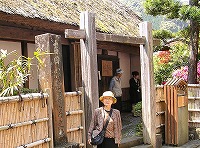 |
|
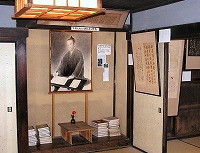 |
| Murayama House, 2007 |
In 1858, under the status of a prisoner, devoting his energy to the training of young generation, taking over Shokason-juku, he began criticism against Tokugawa's government for its signing of the Treaty of Amity and Commerce between Japan and the United States without the Imperial Court's permission. He tried to assassinate Asakatsu Manabe, a member of Shogun's council of elders, which was found out and he was imprizoned to Noyama Jail again. The picture below is its ruins.
Next year in 1859, he was transferred to Tenmacho Jail in Edo (presently
Tokyo) for Ansei Purge and was soon executed.
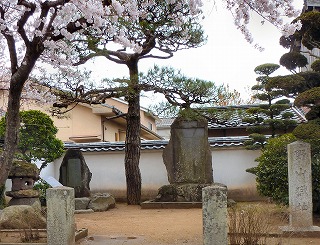 |
| Noyama Jail Ruins |
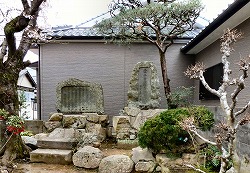 |
| Iwakura Jail Ruins |
|
|
| Tokoji Temple
This is a prominent temple of Oubaku Sect in Japan, built in 1691 by Mohri
Yoshinari, 3rd lord of Choshu Domain. In its prime there were said to be
40 buildings and 80 priests.
It is the temple of Mohri Family, so that in the graveyard are tombs of
the odd-number lords from Mohri Yoshinari (3rd), their wives and families.
More than 500 stone lanterns around were spectacular.

|
|
| Daishoin Temple
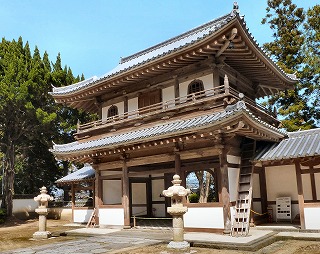
This is the temple of Rinzai Sect, also for Mohri Family. It was built
in 1656 by Mohri Tsunahiro, 2nd lord of Choshu Domain, worshipping Hidenari
(1st lord).
In the precincts there were tombs of Hidenari (1st lord) and the even-number
lords from Tsunanori (2nd), their wives and families. About 600 stone lanterns
were lined up before the tombs.
This graveyard, just as Toko Temple, had an air of solemness and peace in the calm atmosphere, and it made me feel "Quiet Japan here".
|
|
| Hagi Castle Ruins (Shizuki Park)

This castle was built by Mohri Terumoto as the castle of 36 man-goku over
these 2 domains. It is also called "Shizuki Castle".
It was demolished in the year 7 of Meiji period (1874). So there were its
ruins before our eyes, with the moat, castle walls and stone walls....
A part of the castle's keep was now Shizuki Park, looking up at Mount Shizuki.
"In the park there are remains of Shizuki Shrine, Hananoe Tea Hall
and Toen Garden" (Hagi Sightseeing Association).
Yes, it was supposedly a place of perfect comfort. Cherry blossoms would
soon be at their best. A lot of viewers would get together.
I saw the signboard to "Hananoe Tea Hall" on the way. It said
"Tea will be served." I should have dropped in.
According to the guidebook of Hagi City,
In the last days of the Tokugawa Shogunate, Mohri Takachika, 13th lord,
extended the Hananoe Palace and added this hall during Ansei period (1854-1860).
It was the house of a secret conference of attacking the Shogunate, pretending
to be a tea ceremony.
In Meiji 22 (1889), it was brought over to the park, and now a real tea
ceremony is held. |
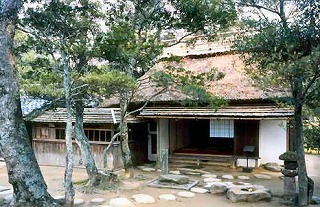
|
|
| Hagi Castle Town
Under the map of Edo period our couple walked along the quiet paths (Kikuya-yoko
cho path, Iseya-yoko cho path and Edoya-yoko cho path).
There were several interesting historic spots, including the house of Kikuya,
a wealthy merchant, the old Kubota house, a storehouse with Namako walls,
the place Shinsaku Takasugi born, the old house of Koin Kido.
We could easily imagined the old days. It was not bad to stroll freely
at times, stopping anytime, anywhere.
|
|
I truly recommend Hagi Sea Market, a roadside service area.
Local food, land and sea delicacies, cakes of its specialty..... So various!
We had lunch of a special bowl of rice topped with fine seafood at "Gangan".
Not only delicious but inexpensive.
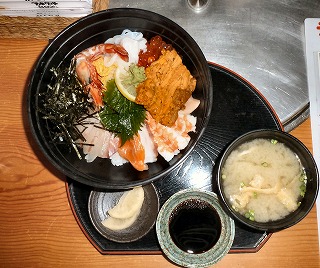
Emiko seemed interested in a small flower vase. She bought one, saying
"I'll put this on the shoe cupboard." I bought 2 pottery tumblers.
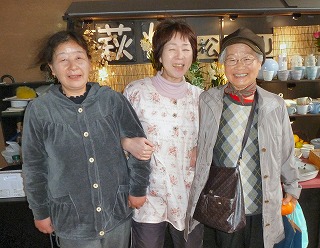
|
|
|
 |
|
Ms. Ubin, a staff
available for Japanese,
English and Chinese. |
Hagi Grand Hotel "Tenku" we stayed in for 3 nights was situated
in the center of Hagi City, and in front of it was conveniently the cycle
bus stop.
It was said to be the largest-scale hotel in the city. Dinners were satisfactory
with smorgasbord of land and sea food, and cuisine for Japanese-style banquets.
The hot spring "Bath of Koboji Temple" was satisfactory, too.
It was a large round bath hall with an open-air bath, viewing the garden
of 1,700 square meters.
|
| ………………………… |
| The following two sights are the places we visited in May again and got
deep impression.
Kikuya Family House
It is among the oldest private houses in Japan. We entered it for a while.
The road before the house is called "Kikuya-yokomachi", one of
the 100 Roads of Japan. Namako walls are so beautiful. They are outer walls
of buildings covered with square tiles jointed with raised plaster.
Aiba River
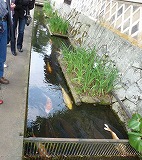
Big carp were seen swimming in the little stream along the path like samurai
drama.
The stream was said to be used for daily life and farming.
I sighed naturaly, thinking "What a chic town Hagi is!"
|
|
The 2-day cycle-bus ticket (picture, right) was convenient.
We rode on both "Teacher Shoin" (the eastbound course) and "Boy
Shinsaku" (the westbound course), matching to the places of our purpose. |
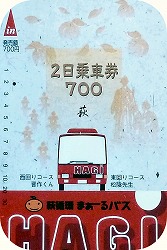 |
|
|
| Reading: 10' 46" |
| Total Reading: 28' 35" |
|
|
|
|
|
|
|
|
|
|
|
|
|
|